Media | Articles
Weird and wonderful: Odd-looking 1948 TASCO prototype draws a crowd in Amelia
Gordon M. Buehrig was never at a loss for ideas. Great ones. As the man responsible for designing the Auburn 851 Speedster, Cord 810/812, and several variants of Duesenberg’s Model J, Buehrig had a proven automotive track record. So when he proposed the idea of a European-styled sports car to a group of 1940s investors, it wasn’t a hard sell.
Although Buehrig’s sleek and unusual design never reached production, it remains a stylistic and technological marvel. You may even say it’s concours-worthy. Buehrig’s 1948 TASCO—an acronym for The American Sports Car Company—was one of a handful of rare automobiles displayed in the “Weird and Wonderful” Class at the Amelia Island Concours d’Elegance last month. And, like its unusual-looking neighbors, it drew a steady stream of interesting gawkers and photographers.

“It’s definitely an immediately recognizable design,” says Brandon Anderson, executive director and CEO of the Auburn Cord Duesenberg Automobile Museum. “It’s not only aeronautically styled, but the cockpit looks like an airplane, as well.”
Starting with a 1947 Mercury chassis, Buehrig created a two-seater with a long hood and short deck; the car’s aluminum body was built by the Philadelphia-based Derham Body Company. The design also featured detached fiberglass front fenders that turned with the wheels, side vents on each side of the vertical grille that directed air to the radiator, and a two-piece plexiglass roof that could be removed to create a convertible effect—the first T-tops. Buehrig called his invention a “roof with movable parts,” and he was awarded patent no. US2556062A in 1951. (After Chevrolet introduced the 1968 Corvette with T-tops, Buehrig sued General Motors and won, allegedly receiving a small settlement.)
Another first for Buehrig’s design was the use of magnesium wheels, and the car’s tapered rear featured a Plexiglas bubble that encased the taillights and license plate. A chrome-covered half-donut tray held the spare tire, which could swing out for easy removal.
Marketplace
Buy and sell classics with confidence
Power was provided by a Ford flathead V-8 with Ardun heads that produced 150 horsepower. It has three-on-the-tree manual transmission. Dual gas tanks allowed the driver to switch to higher octane fuel for racing.
Inside the cockpit, the dashboard was upright and included a plethora of levers and gauges, all of which had a function, including a push-button start and turn signals located above the driver’s head, just like in a small airplane. A vacuum lift operates the windows.
Anderson says the car was once a part of the Harrah Collection and was welcomed into the Auburn Cord Duesenberg Automobile Museum in the early 2000s. Originally maroon, it was repainted gray at some unknown point. The ACD Museum also owns Buehrig’s original scale model of the TASCO.
“It’s incredibly hot in there (when the roof is attached)—it’s like a solarium,” says Anderson, who prior to Amelia Island had never removed the T-tops. “It’s really exhilarating to drive, especially when you think about the fact that it’s the one and only. And it sounds really good, especially in first gear when you’re revving it up.”
The TASCO cost about $57,000 to build (that’s the equivalent of about $632,000 today), which explains why it never went beyond the prototype. Besides, while automotive enthusiasts now find the car fascinating, no one has ever described it as elegant. Even Buehrig himself described the TASCO as “my Edsel.” And we all know how that story ended.
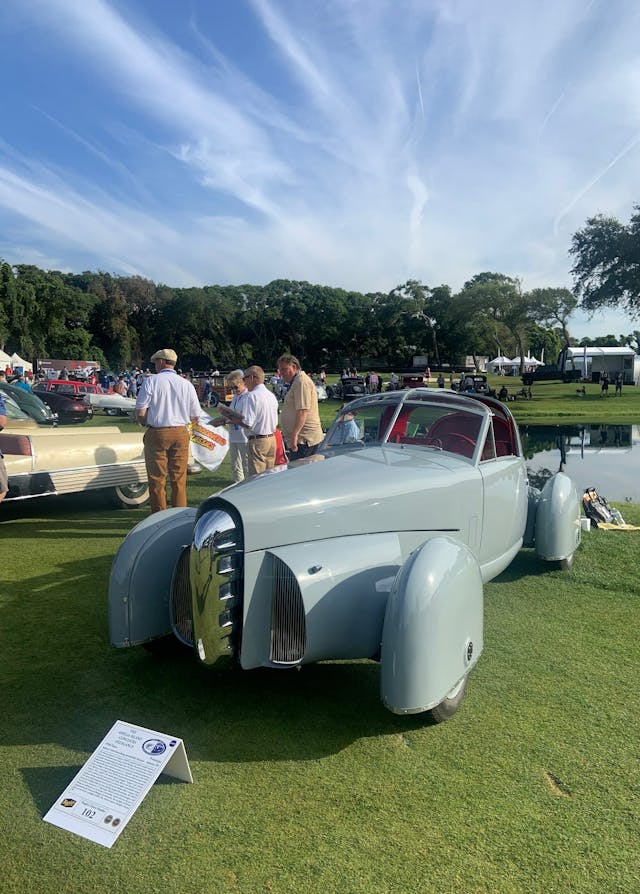









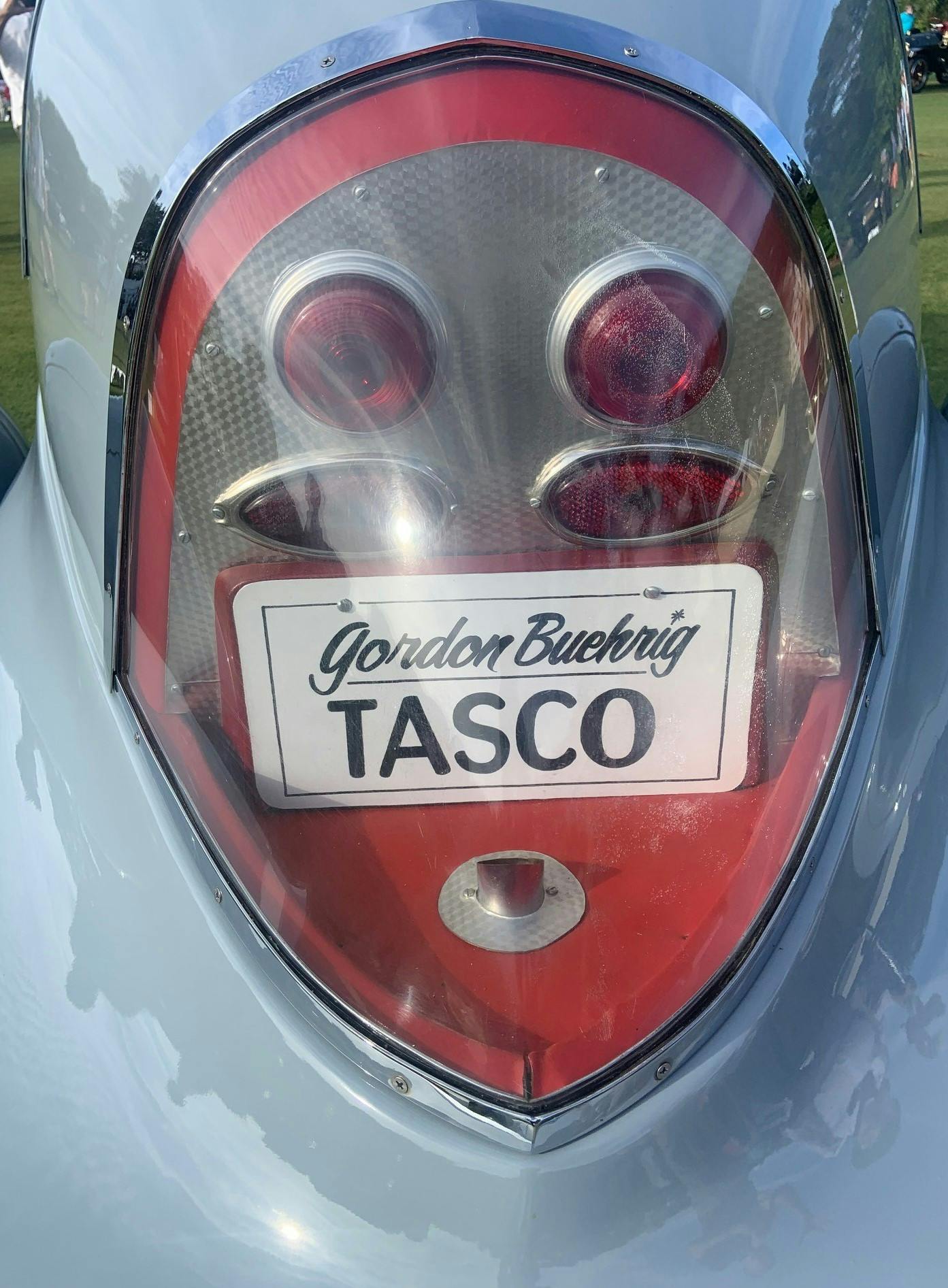
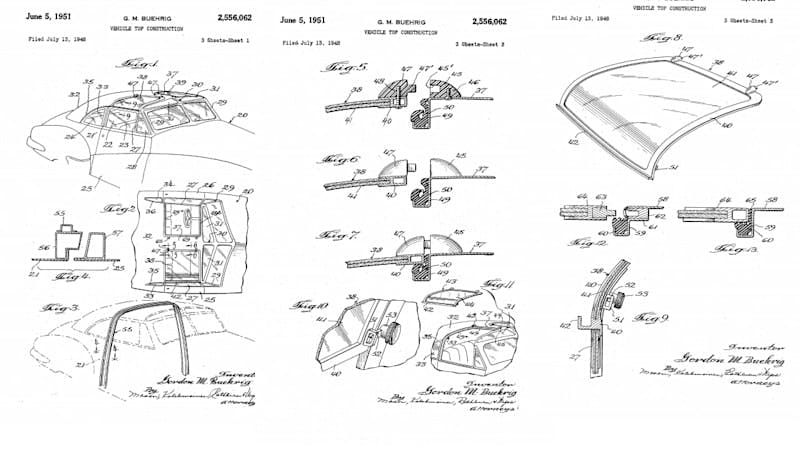
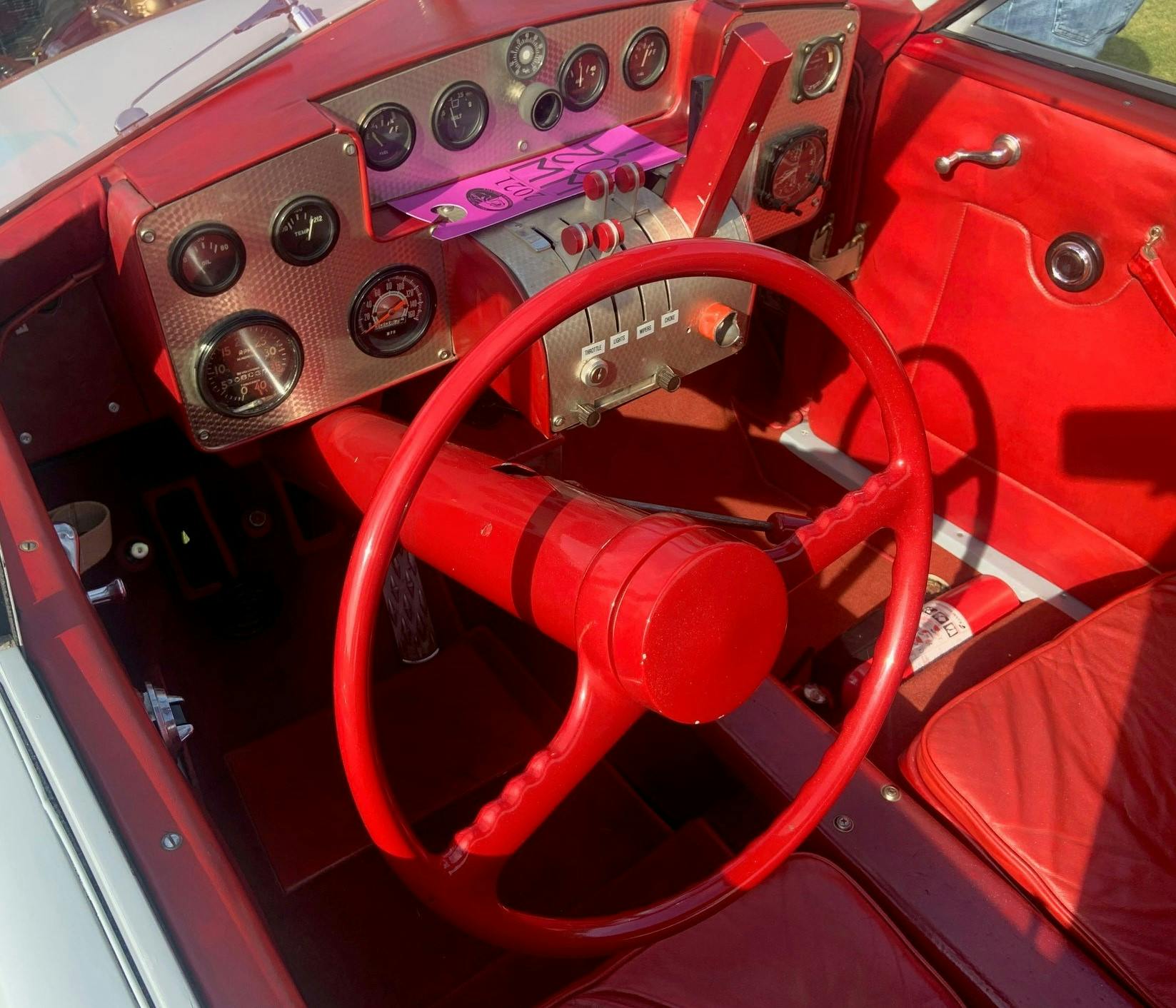

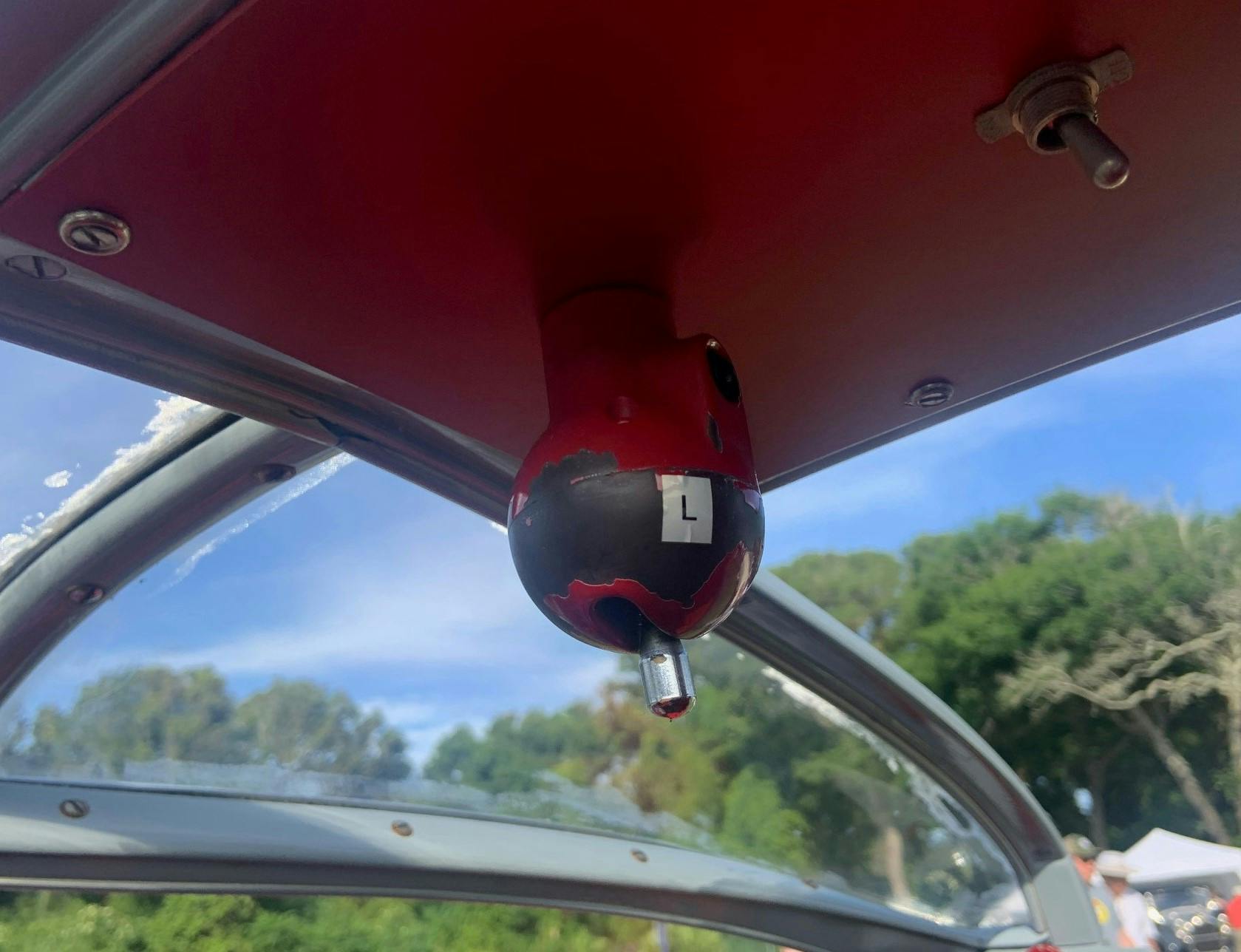










This car was actually donated to the ACD by Ralph Engelstad from his Auto Collection. Mr. Engelstad purchased the TASCO at the Harrha’s auction on June 28, 1986 at a cost of $35,000.00. When He purchased the car it was two tone, a yellowish cream with red accents. The color of the car today was painted at the Imperial Palace Auto Collection restoration shop before it went to the ACD in the 90’s. This car was still owned by Mr. Engelstad as of June 31, 2001, even though the car had been on display at the ACD for many years previous to that. This infomation comes from the accounting sheets of Bradshaw & Smith of Las Vegas, who at the time were Mr. Engelstad’s accounting firm.